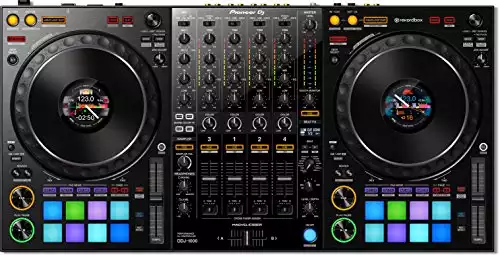Over the years, Pioneer DJ has produced numerous DJ controllers of varying qualities. Generally, most are very good, while others are considered amazing. Since its release, many people have argued that the DDJ 1000 goes well beyond just “amazing”, and instead the Pioneer DJ DDJ 1000 borders on near incredible.
Regarded as Pioneer DJ’s flagship DJ controller for rekordbox DJ software, the Pioneer DDJ-1000 has garnered a serious reputation with its club-style layout.
Many people go as far as to say that it is one of the best Pioneer DJ-made DJ controller machines ever made.

As we go through this review, we’ll see whether this is true or not, as well as exactly what this remarkable device has in store for its user.
Is the DDJ 1000 Worth it?
The DDJ 1000 is an all-around excellent DJ controller all-around. It pulls a load of features from the DJM 900 NSX2 mixer and CDJ-2000NXS2, offering DJs a 4-channel mixer section. The DDJ 1000 is simply perfect to get familiar with what to expect in a club.
If you’re looking for a Pioneer DJ controller for rekordbox DJ (and the Serato version) the DDJ 1000 is certainly one of the best machines on the market.
Pioneer DDJ 1000 Pros & Cons
Pros
Cons
First Impressions – The Physical Build
Straight away the DDJ 1000 reminded me of being a Nightclub DJ booth. All the buttons and knobs on the DDJ 1000 are arranged in the same layout as those on our club-standard CDJ-2000NXS2 and DJM-900NXS2 set-up.
Taking a look at the DJ controller’s build, the first thing you’re going to notice is its size.
Gone are the days of playing with relatively small and compact DJ controllers.
Here, the DDJ 1000 proudly makes itself known to the world, making sure to take up as much space as possible. Yes, it’s still pretty lightweight and portable (almost surprisingly so) but that doesn’t mean you’re going to cart this around as easily as some other smaller DJ controllers.
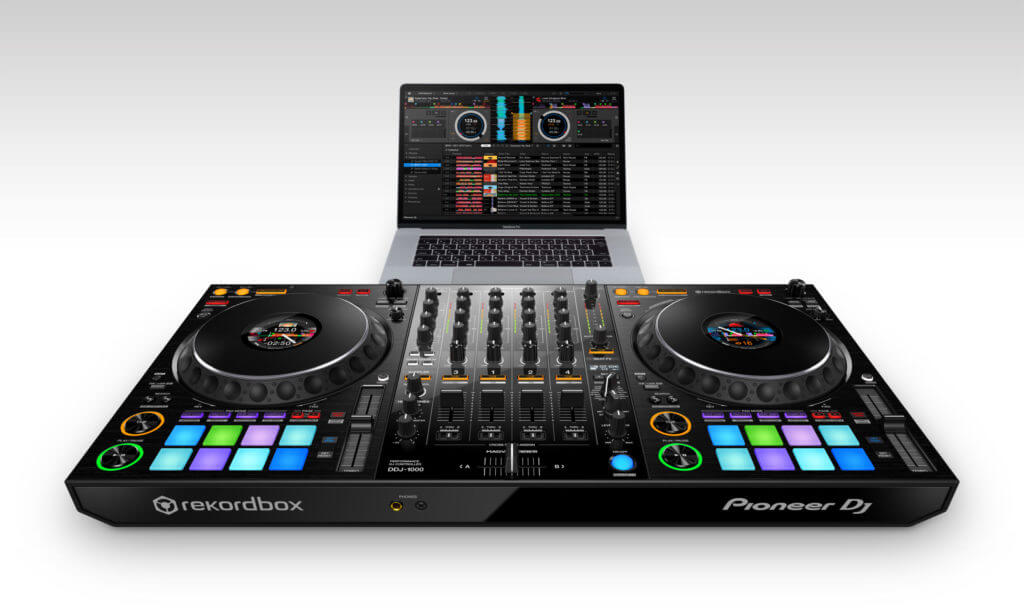
From a physical build perspective, the DDJ 1000 is Pioneer DJ’s pride and joy.
The DJ controller is incredibly solid and feels like it can be used day after day without any negative impact.
The jog wheels in particular seem particularly durable, with a level of solidity that you don’t come across with most DJ controller units today.
This is probably because they are mechanically made rather than using some of the cheaper plastic types.
The same sentiment is shared with the various faders and knobs. All of them just have a density to them that feels like they won’t break if you hold them too hard, or pop off if you accidentally use a bit too much force.
I’m an aggressive scratch DJ and the Pioneer DDJ 1000 kind of did some therapy on me. Playing with it was like doing that falling exercise where you just “trust” that the person behind you will catch you.
After playing with so many DJ controller machines where you literally couldn’t, the DDJ 1000 had me doing sighs of relief when it didn’t break the moment I got too into the mixing or scratch routine zone.
Spec Breakdown
- Length: 14.23 inches (361mm)
- Width: 27.87 inches (708mm)
- Depth: 2.89 inches (73mm)
- Weight: 13.2 lbs. (5.98kg)

The Design
From a design perspective, the DDJ 1000 looks incredible. I mean, just look at it! The thing looks like it was made to appeal to DJs that specifically tore up the club scene.
Not only is everything exactly where you expect it to be, but the use of color for the performance pads just adds this sense of excitement while performing.
Connection Options
One of the great things about the Pioneer DDJ 1000 is that it comes with a pretty healthy variety of connective options to play with.
Front Face
Starting on the front, there is an option for either a 1/4th-inch or a 1/8th-inch headphone port.
This is a pretty solid step up from the majority of other DJ controllers on the market, which generally will only have the 1/8th-inch option or will require an additional adapter.
Back End
At its back, the Pioneer DJ DDJ 1000 has the majority of its connection ports. There, you’ll immediately find two Master Output options.
The first option is an XLR while the second is an RCA port.
There is also a TRS Balanced Booth output option that is available. Generally, this too is a bit unique, as a DJ controller will have either an XLR connection point or an RCA.
Most times they won’t have both, and it’s almost impossible for them to be accompanied by a TRS port as well.
Line-In Options
There are 4 RCA channel Line-In options that are also available. These open the DDJ 1000 up to any additional sound hardware like a set of studio monitors or hi-fi speakers.
As they are designated to a particular channel, this means you could potentially have multiple sounds playing from different speakers simultaneously.
USB Connections & Microphone Ports
Included in the build are also dual USB ports that can be hooked up to either a laptop or a USB stick to quickly access music.
Dual USB ports are also great for performing sets in quick succession with one another as well as an easier way to transition between two separate DJs.
The DDJ 1000 also has dual USB ports installed to link up with external PC or Mac devices,
The DJ controller also has two balanced mic inputs that can handle either TRS or XLR plugin types.
Not only can these mics be used to tie directly to the DJ controller speaker setup, but, they can also be used to record and store sounds, treating them later as beats or as a track.
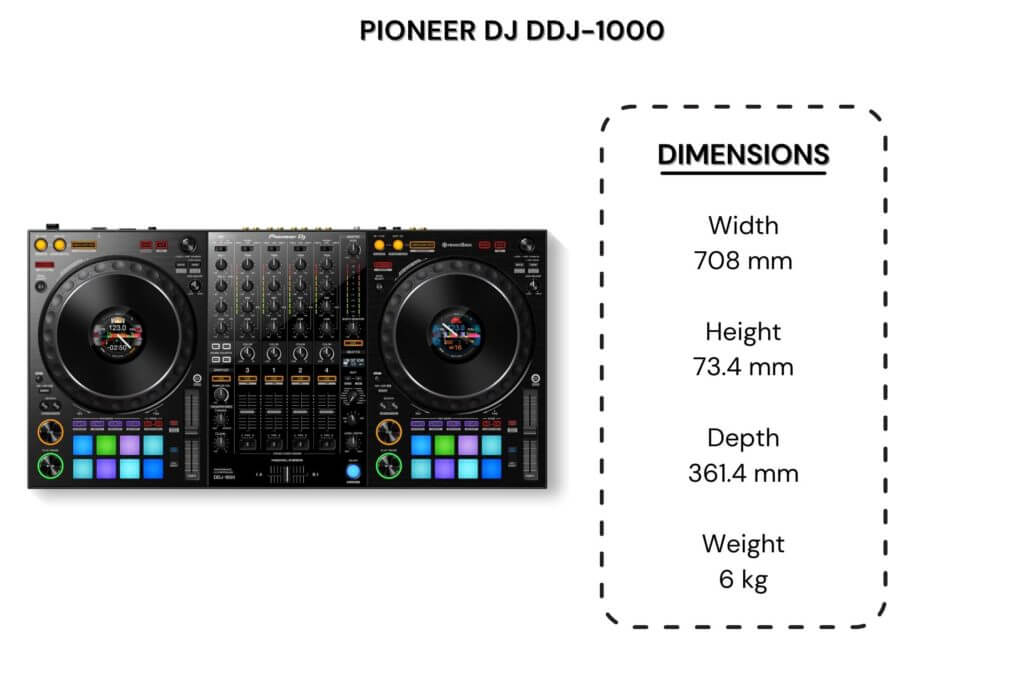
Taking A Deeper Look – DDJ-1000 Features
Since we’ve gone over the DDJ 1000’s physical build and design, let’s take a look at some of the many features included in this DJ controller.
These include its DJ software, performance pads, pad FX, jog wheels, pitch faders, mixing section, FX options, and different loop controls.
DJ Software
First up, let’s take a look at the star of the show; the software. The Pioneer DDJ 1000 is a rekordbox DJ child through and through.
Not only is that the only DJ software type that the DDJ 1000 will run off of (sorry Serato fans) but each model comes with a full version already included.
The latest version of Pioneer DJ’s rekordbox DJ software is an impressive piece of technology that continues to grow and improve over time as new patches are installed.
In this case, not only does it provide the basic functional features for the DDJ 1000, but it adds in a few additional ones as well.
One of the more prominent ones includes the detailed tagging system. This feature allows users to organize and catalog their music however they want it.
This can be alphabetical, track time, how many jumps are in each track, or any other area of importance for the DJ in question.
The Installation Process
The process for installing the software is pretty simple and doesn’t take a lot of time.
Virtually all of the steps are prominently explained, so you won’t have any issues or crazy hoops to jump through.
You’ll also be able to export tracks over to your USB. From there, anything you put together on a USB can be installed on the DJ controller.
This makes gig prep super easy, as you’ll seldom need to pull out your computer while actually on the job.
Performance Pads
After looking over the software, the next prominent areas are the backlit rubber performance pads and their different modes.
The Pioneer DDJ 1000, in terms of the different performance modes, has quite an impressive selection to choose from.
There are 16 multi-colored pads (8 on each side) that are all an impressive size and feel good to press on and use.
Main Pad Modes
Each side has 4 main “pad modes” to choose from hot Cues, Pad FX1, Beat Jump, and Sampler.
Hot Cues allows you to immediately set hot cues for any specific or key parts of a track. As a result, the hot cues allow you to flag those hot cues at specific points and immediately cue back to them later on.
Pad FX1 is only available after fully installing rekordbox DJ and setting it up. The pad FX option is primarily a DJ software-based FX option rather than a hardware-based one. While this does take away an option for people playing with the DJ controller fresh out of the box, once you do have it set up, Pad FX offers up a lot of creative and texture layering options to play with.
Beat Jump is a great feature as it quite literally allows you to move through a track based on the number of beats rather than seconds. This means you can beat jump in a track of 12 beats even if this is only 10 seconds ago. Conversely, you can beat jump 5 beats even if those beats were spaced forward by 15 seconds. If you’re running short on time and need a good transition, beat jump can be a lifesaver while performing.
Sampler works as the name implies. With it, you can use the dedicated Sample Bank controls to store away several sound samples for use later with your set. If you’ve got some beats and mixes you particularly like, you can store those away for use later on.
- Advanced performance
- Wide range of effects
- Large jog wheels
- HD screens included
- New beat FX feature
- Complicated set-up
- Not the smoothest jog wheel
- Very heavy
Additional Pad Modes
In addition to the main pad mode options, you can also access the 4 extra pad mode options via the “Shift” button. This opens up access to the other four options: Keyboard, Pad FX2, Beat Loop, and Key Shift.
The keyboard, as well as the Key Shift and Key Sync buttons, all allow access to more track manipulation.
Pad FX2 offers an additional set of software-based preset options to play with.
Beat Loop is a quick and easy alternative to the current loop points control, allowing you to quickly determine where a track loop should start and stop.
Jog Wheels
While the rekordbox DJ software is a big draw, the Pioneer DJ DDJ 1000’s jog wheels are the real star of the show. These things are legitimately insane in all of the right ways. They are both mechanical as well as full-size (8 inches).
This is especially great, since, more often than not, most jog wheels on DJ controller decks are either miniature or made from super flimsy plastic.
Here, neither of those things are the case, and it shows.
Their resistance can be adjusted based on your preference while the top plate has enough of a grip on the sides to grant an exceptional scratching experience.
In addition, based on your particular DJing style, you can change up the jog wheel modes and channels. This extra amount of time and dedication is not only respectable and commendable, it’s genuinely fun and enjoyable.
Trust me, you’re going to find yourself playing with the jog wheels for hours on end (especially the scratching features).
The jog wheels are literally handed down from the CDJ-2000NXS2, so they look and feel the same to use.
As a result, using rekordbox DJ with the DDJ-1000 gives the DJ a similar experience as playing from USB drives with an NXS2 set-up.
The full-size jog wheels have a full-color high-definition LCD jog display screen at their center. This helps track and display important track-based information, including the BPM, key, and the track’s length.
The LCD jog display also presents the track’s waveform as well as any cue points that have been set and any activated loops.
All of these visual cues and bits of information on the jog displays, while numerous, are given to you in a way that it’s always something you’re “aware of” rather than “focused on”. This also ensures you’re not constantly shooting glances over at your computer, where you’re more likely to potentially be distracted or make a mistake.
Plus, once you get a handle on the different colors and what goes where it turns into a gas gauge for your DJ controller.
Finally, Pioneer DJ has refined the software processing for jog wheel and crossfader operation to help reduce latency.
So scratching feels much more intuitive with the DDJ 1000. Each channel can also switch between different crossfader modes allowing even more control.
Pitch Faders
The Pioneer DDJ 1000 has both large as well as accurate pitch faders that are available. These make it super easy to play with and manipulate your track’s BPM.
It also has incredibly precise control, making beatmatching by ear stupidly simple. I used to have a bit of an issue beatmatching strictly by ear and would need some help.
The fact that even I can tell a beat just by listening to it for a bit kind of proves the usefulness that these faders offer.
Key Controls
While not a direct connection with them, the Key Controls are positioned right next to the pitch faders. There, you’re able to set both the Master Tempo of a track as well as the full Tempo Range.
Depending on what you decide, you can lock it in place using the Key Lock.
You can also do a complete reset with the Key Reset feature.
Key locking, in particular, allows you to still alter and play with the tempo of a track while locking in and maintaining the Key of the song.
This is very important if you’re someone that wishes to use harmonic mixing.
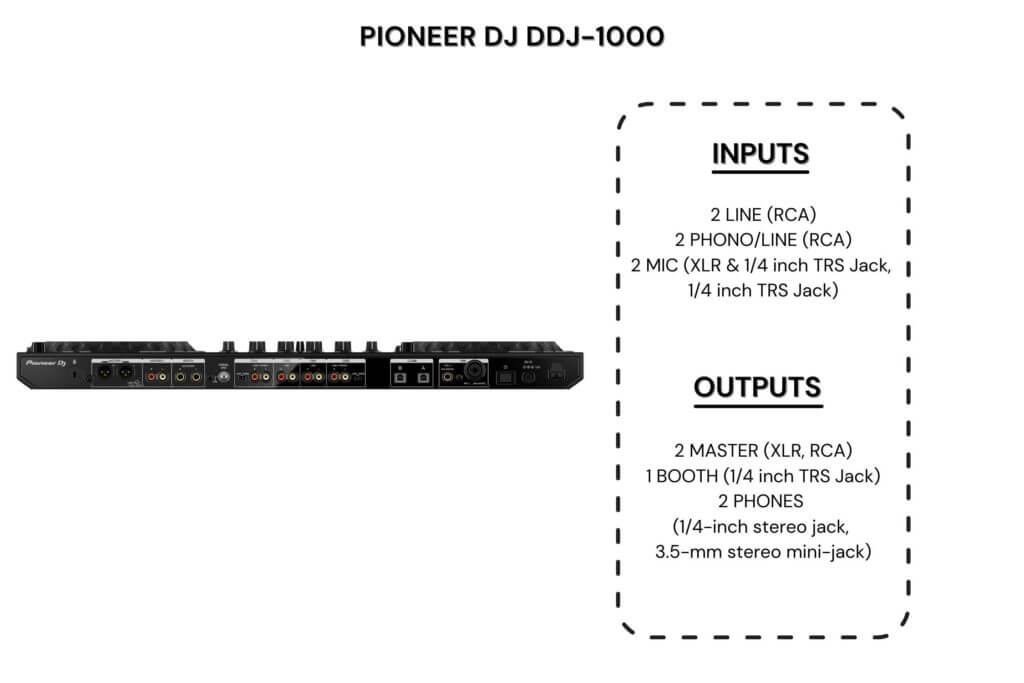
Mixing Sections
The DDJ 1000 pulls directly from the DJM 900 NSX2 mixer, offering DJs a 4-channel mixer section. That’s not all the DDJ 1000 takes from a highly acclaimed DJM mixer.
In addition, the DDJ 1000 hosts numerous features and traits that make it a legitimate mixing option for most DJs out there.
Its main mixing section grants direct access over the 4 channels for seamless DJ changeovers, each of which offers a full 3-band EQ option.
Each of the 4 channels also comes with a “Trim” knob as well as a channel meter. The channel meter makes the process of gauging your sound levels and ensuring you stay in line, much easier.
The DDJ-1000 also features four Sound Color FX from the DJM-series mixers – Noise, Pitch, Filter, and Dub Echo.
The Color Knobs
Under each of the “EQ knobs” is the “Color knob”. This is used alongside the Color FX feature (more on that later) and can be turned on and activated through several buttons along the leftmost side of the mixer section.
This is a super fast and effective method of adding different effects to your soundtracks without having to directly go to the FX area of the DJ controller.
Underneath the Color knobs are both the crossfader as well as the channel faders. The crossfaders are meant for particularly aggressive scratch DJs and can handle over 10 million movements at a time.
As a result, this puts the DDJ 1000’s durability well over even some quality dedicated mixers. Just as well, each channel can similarly move between different crossfader modes easily from one to another for even greater control.
The DDJ 1000’s crossfader has a smooth feel and is very similar to the new Magvel fader Pro that is found on the DJM-S9 battle mixer.
Definitely a good thing and assist with creative flair.
The Left Side
The leftmost side of the mixer section includes a sampler, as well as a mic and a set of cue controls.
There is also a 2-band EQ on this side of the mixer, granting additional control over any microphone-related output.
The sampler is somewhat of a fun bonus option that makes previewing samples incredibly simple, allowing you to hear them with your headphones.
Rounding out the left-hand section is the “Level” as well as the “Cue/Master” knobs. These grant the user a much more accurate preparation of your mix.
The Right Side
On the rightmost side of the mixer are the “Master Output” control options. This is used to monitor and control the sound levels more.
This is in addition to the “Booth Monitor” knob, which also helps to modulate the volume. In this case, the Booth Monitor works to affect any included or connected booth speakers.
Probably one of the more interesting FX features on the DDJ 1000 is Beat FX.
The Beat FX feature is also on the right side of the mixer and is considered a hardware-based FX that can easily be applied to any of your track sets and setups.
The Beat FX feature has around 14 different beat FX choices to work with and can be adjusted based on the established and dedicated buttons.
Beat FX can also be set to the Master output as well as any specific channels, offering DJs a ton of flexibility when using any of the FX options.
There is also a “Level/Depth” knob available that gives you the final control touches.
Ultimately, while all of these different knobs, buttons, and items exist, they don’t ever manage to make accessing or using them too big of a chore or a learning curve.
FX Control Options
Probably the area with the most amount of variety throughout the entirety of the DJ controller itself, the Pioneer DDJ 1000 has an incredible amount of different FX features.
These are both hardware-based as well as software-based.
As previously talked about, the DDJ 1000’s Mixer Section houses 4 Color FX.
It also has around 14 different hardware-based FX features that are all fairly enjoyable options to play with. While it isn’t quite as imposing as the NSX2 mixer setup, it’s close enough that you’d be forgiven for confusing what was where.
Many standard DJ controller-based mixer DJs have shifted from the DDJ 1000 to the NSX2 dedicated mixer only to feel right at home with the transition.
When you decide to add in the Pad FX mode, you’ll have access to a more complete array of FX options.
Looping Control Options
As with the FX options, Pioneer’s flagship DJ controller has many looping options as well. These include a variety of methods like an In/Out point, Loop Adjust & Reloop options, as well as with the Pad Modes.
- In/Out Option: This option allows you to create and activate a preset loop. Here, you’ll determine the loop’s overall size, either making it longer or shorter based on how you want the track to sound.
- Loop Adjust & Reloop Options: Here, by using the “Shift” button, you’ll have access to the Loop Adjust and Reloop options. This grants additional control over how the loop sounds, granting you the ability to further refine it.
- Pad Mode: You can also use Pad Mode to activate many of the loop features. Based on the individual buttons, you can activate a predetermined loop length, from there further altering how long or short it is.
DDJ 1000 – Is it Worth Your Time?
The Pioneer DDJ 1000 very much exemplifies everything that is Pioneer at its peak. This DJ controller, simply put, just does everything right.
I don’t feel comfortable throwing around the term “Perfect”, but I’m scratching my head here on trying to find where it comes up short.
It’s an awesome DJ controller, an amazing mixer, and an impressive CDJ device.
If you’re someone that plans to head out to the clubs or to perform gigs, this is what you want to take with you.
So, “Is the Pioneer DDJ 1000 worth your time?“
The only word I can give is, “Yes.” It is worth your time and money. Pretty much, the only people I could see this not being for are people who love Serato.
It doesn’t matter if you’re a DJ that loves mixing, a DJ that is just getting started, or a DJ that has been in the game for a while now. As far as rekordbox DJ controllers are concerned, the DDJ 1000 is something you want in your home.
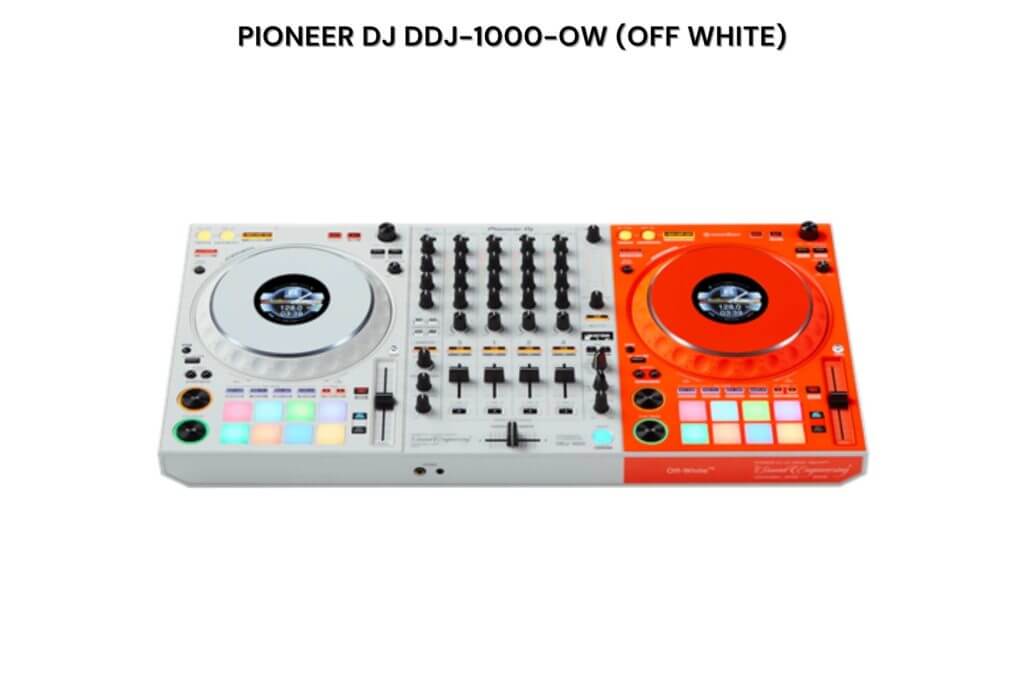
DDJ 1000: The Verdict
Ultimately, the Pioneer DJ DDJ 1000 is a top-of-the-line DJ controller that does everything right and without a single misstep. If you’ve got the money, you need to get this rekordbox DJ controller.
If you don’t get the money, you need to do some gigs, save up, and get this DJ controller.
There are a variety of good DJ controller options out there, and most of them certainly have their appeal.
However, if you want one that does well at pretty much everything (and looks great doing it) you don’t need to look anywhere other than here.




